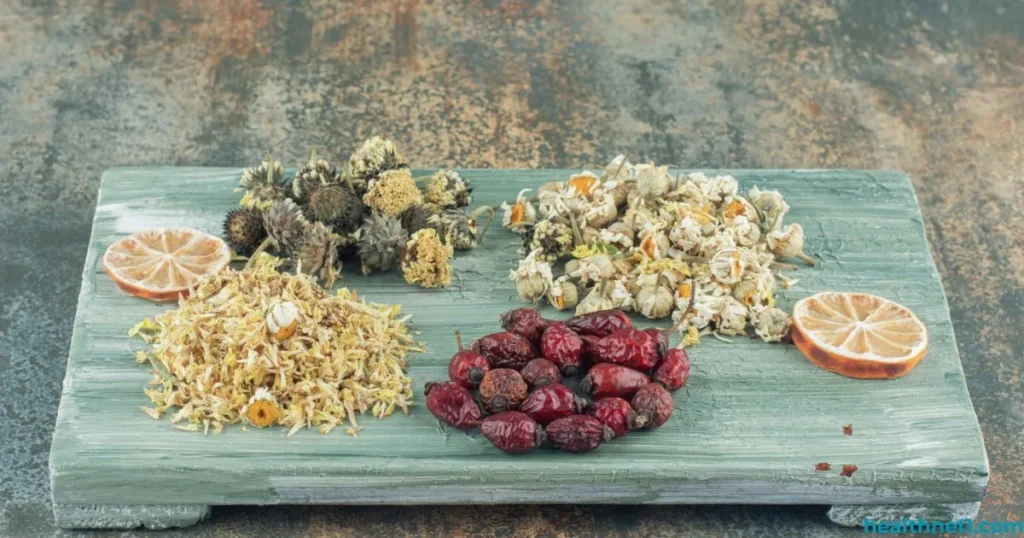A Natural Path to Healing Your Skin and Gut
Have you ever felt frustrated by those stubborn rashes that seem to appear out of nowhere, or by the bloating and fatigue that just won’t quit? Maybe you’ve tried creams, pills, or diets—yet nothing seems to fully work. That’s because many of these issues share a silent culprit: fungal overgrowth.
What most people don’t realize is that fungi like Candida albicans can quietly disrupt both your skin and gut balance. When your internal ecosystem is out of tune, your body gives signals—itching, brain fog, or digestive distress. The good news? Nature has already provided powerful allies in the form of anti fungal herbs.
Table of Contents
In this guide, you’ll discover how these herbs help restore harmony to your body, which ones are backed by science, and how to use them safely and effectively.
Understanding Fungal Imbalance: Why It Happens and How It Affects You
Fungi naturally live on your skin and inside your gut. Normally, they coexist peacefully with beneficial bacteria. But when antibiotics, stress, or a high-sugar diet disturb this balance, fungi multiply excessively—leading to infections, digestive problems, and skin irritation.
Common Triggers of Fungal Overgrowth
- Long-term antibiotic use
- Excess sugar and refined carbohydrates
- Chronic stress
- Weakened immunity
- Lack of gut-friendly bacteria
Warning Signs You Might Have Fungal Imbalance
- Persistent skin rashes, athlete’s foot, or dandruff
- Bloating, diarrhea, or sugar cravings
- White coating on the tongue (oral thrush)
- Fatigue, brain fog, and weakened focus
Table: Common Symptoms and Their Fungal Links
| Symptom | Possible Cause | Related Area |
| Itchy skin or rashes | Candida or ringworm | Skin |
| Bloating, diarrhea | Candida overgrowth | Gut |
| Discolored nails | Fungal nail infection | Nails |
| Brain fog, fatigue | Systemic yeast imbalance | Whole body |
Why Choose Herbal Anti Fungal Remedies Instead of Chemicals?
You might be wondering: Why turn to herbs when there are pharmaceutical antifungal drugs? The answer lies in how these remedies work with your body, not against it.
Prescription antifungals can be powerful but often come with side effects like liver strain or gut imbalance. Herbs, on the other hand, not only combat fungal infections but also support immunity, detox pathways, and digestive health—offering a holistic solution.
Scientific Backing
Studies published in PubMed and WebMD have shown that plant compounds such as allicin (in garlic) and carvacrol (in oregano) possess strong antifungal activity. They can inhibit fungal cell walls, preventing further growth while helping beneficial bacteria flourish.
Top 5 Anti-Fungal Herbs for Skin and Gut Health
Let’s explore the most effective herbs that help cleanse fungi naturally—each backed by both tradition and science.
1. Garlic (Allium sativum): Nature’s Potent Fungus Fighter
Garlic is one of the oldest natural antifungals known to humankind. The compound allicin—released when garlic is crushed—can destroy fungal membranes, making it effective against Candida albicans and Aspergillus.
How Garlic Helps You:
- Kills fungus without harming good bacteria
- Strengthens immune defense
- Aids digestion and detoxification
How to Use:
- Eat one raw clove daily (crushed or chopped)
- Add to meals or mix with honey
- Available as tinctures and capsules
Scientific Support:
According to Healthline, garlic extracts have been found effective in treating skin fungi and yeast infections, often outperforming synthetic creams in mild cases.
2. Oregano (Origanum vulgare): Small Leaf, Big Power
Oregano isn’t just a spice—it’s a natural antifungal powerhouse. Its active compounds carvacrol and thymol create an environment hostile to fungus and yeast while soothing the gut.
Benefits of Oregano for You:
- Disrupts fungal cell membranes
- Balances gut microbiota
- Reduces bloating and inflammation
Ways to Use:
- Mix a few drops of oregano essential oil with carrier oil for topical use
- Add dried oregano to tea for internal cleansing
Read more about natural remedies that work in Top 5 Natural Antifungal Remedies That Really Work.
Reference: PubMed Central found oregano oil effective against several resistant fungal strains, including Candida.
3. Pau d’Arco (Tabebuia impetiginosa): The Inner Bark Healer
Sourced from the bark of a South American tree, Pau d’Arco contains lapachol and beta-lapachone, compounds with remarkable antifungal and immune-boosting activity.
Why It’s Great for You:
- Fights yeast infections and gut fungus
- Cleanses liver and blood
- Strengthens overall immunity
How to Use:
- Brew the inner bark as a tea
- Use capsules for easier daily intake
Scientific Support:
Frontiers in Pharmacology reviewed Pau d’Arco’s antifungal mechanisms and found that it significantly inhibits Candida growth while promoting beneficial bacteria balance.
4. Turmeric (Curcuma longa): The Golden Anti-Inflammatory Herb
Turmeric isn’t just for curry—it’s an antioxidant-rich herb with a powerful compound called curcumin, which suppresses fungal growth and inflammation.
How Turmeric Benefits You:
- Prevents fungal colonization in the gut
- Soothes inflamed skin
- Enhances immune response
Best Ways to Use:
- Add turmeric powder to warm milk with black pepper for better absorption
- Apply turmeric paste on fungal rashes for natural relief
According to WebMD, curcumin shows strong antifungal properties, especially when combined with piperine (from black pepper), making it a versatile choice for both skin and gut health.
5. Neem (Azadirachta indica): Ancient Ayurvedic Defender

Used for centuries in India, neem is known for its powerful antifungal, antibacterial, and detoxifying properties.
Neem’s Key Benefits for You:
- Treats fungal skin infections, eczema, and dandruff
- Supports liver detoxification and gut cleansing
- Acts as a natural immune booster
How to Use Neem:
- Apply diluted neem oil to affected skin
- Drink neem tea for internal detox
- Take capsules under professional guidance
Research Insight:
According to the Indian Journal of Dermatology, neem extracts have shown potent activity against fungal infections like ringworm and Candida.
Table: Quick Overview of the Top Anti-Fungal Herbs
| Herb | Key Compound | Main Use | Form |
| Garlic | Allicin | Gut fungi, yeast infections | Raw, Capsules |
| Oregano | Carvacrol, Thymol | Gut and skin balance | Tea, Oil |
| Pau d’Arco | Lapachol | Yeast & Candida | Tea, Capsules |
| Turmeric | Curcumin | Inflammation, gut balance | Powder, Paste |
| Neem | Azadirachtin | Skin infections | Oil, Tea |
Using Anti-Fungal Herbs Safely
Before you start adding herbs to your routine, it’s important to understand dosage and precautions. Herbs are natural but still potent—they must be respected and used responsibly.
Recommended Dosages
- Garlic: 1–2 raw cloves per day
- Oregano oil: 2–3 drops diluted in carrier oil (avoid undiluted use)
- Pau d’Arco: 1 cup of tea daily
- Turmeric: Up to 1 teaspoon powder daily
- Neem: 1 cup neem tea or capsule daily (short-term use only)
Precautions
- Consult your doctor before combining herbs with prescription medication.
- Avoid high doses during pregnancy.
- Test oils on a small skin patch first to prevent irritation.
How Diet and Lifestyle Boost the Effect of Anti-Fungal Herbs
You can’t out-herb a poor diet. If your daily meals are loaded with sugar, fungi will thrive no matter how many herbs you take.
Anti-Fungal Diet Tips
- Avoid white sugar, bread, and alcohol
- Eat probiotic foods like kefir, yogurt, sauerkraut
- Drink at least 2 liters of water daily
- Add fiber-rich vegetables to support detox
Lifestyle Practices That Support Healing
- Get enough sleep to strengthen immunity
- Exercise regularly to improve circulation
- Manage stress with meditation or nature walks
When to See a Doctor
While herbs can help restore balance, severe or recurring infections may need professional care.
You should seek medical advice if:
- The infection spreads rapidly or becomes painful
- You develop fever or fatigue
- You notice yellowing nails or severe skin peeling
Conclusion: Restore Balance Naturally
Your body has an incredible capacity to heal when given the right tools. By introducing anti fungal herbs like garlic, oregano, turmeric, Pau d’Arco, and neem into your daily routine, you support both your gut and your skin from the inside out.
Nature’s medicine cabinet is vast—these herbs are simply your entry point to a healthier, balanced you. Start small, stay consistent, and listen to how your body responds.
FAQ – Anti Fungal Herbs and Natural Remedies
Q1. What are the best anti-fungal herbs for Candida?
Garlic, oregano, and Pau d’Arco are among the most effective natural antifungal herbs for Candida overgrowth.
Q2. Can these herbs heal both skin and gut infections?
Yes, herbs like neem and turmeric target both internal and external fungal issues.
Q3. How long does it take for antifungal herbs to show results?
Most people notice improvement within 2–4 weeks, depending on infection severity and lifestyle.
Q4. Can I combine anti-fungal herbs with prescription antifungal drugs?
Always consult your doctor first. Some herbs may enhance or interfere with medication effects.
Q5. Are these herbs safe for daily use?
Generally yes, when used in moderation. However, prolonged use should be guided by a herbalist or healthcare professional.
Disclaimer: This article is for informational purposes only and does not replace professional medical advice. Always consult your healthcare provider before starting any herbal regimen.




